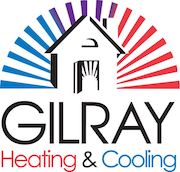
You shouldn’t be forced to give up comfort or spend a lot to keep your home at the right temperature during hot days.
But what is the ideal setting, exactly? We discuss suggestions from energy pros so you can select the best setting for your home.
Here’s what we recommend for the most energy-efficient setting for air conditioning in Wausau.
Recommended Thermostat Settings for Summer
Most people find placing the thermostat at 72-73 degrees is most comfortable. However, if there’s a big difference between your indoor and outside warmth, your electricity expenses will be bigger.
These are our suggestions based on the U.S. Department of Energy (DOE) and ENERGY STAR®.
While at home: 78 degrees. While that appears warm, there are approaches you can keep your home cool without having the AC running constantly.
Keeping windows and curtains shut during the day keeps cold air where it needs to be—within your home. Some window solutions, such as honeycomb shades or plantation shutters, are made to provide added insulation and enhanced energy conservation.
If you have ceiling fans in your house, the DOE says you can raise thermostat temps about 4 degrees warmer without compromising comfort. That’s since they cool through a windchill effect. Since they cool people, not areas, shut them off when you move from a room.
If 78 degrees still appears too hot on the surface, try running an experiment for a week or so. Start by upping your setting to 78 degrees while you’re home. Then, progressively decrease it while adhering to the ideas above. You might be astonished at how refreshed you feel at a warmer temperature setting.
While away: 88 degrees. There’s no need to keep the air conditioner on all day while your residence is unoccupied. Turning the temperature 7–10 degrees hotter can save you an estimated 5–15% on your cooling costs, according to the DOE.
When you arrive home, don’t be tempted to switch your thermostat under 78 to cool your house faster. This isn’t productive and often produces a higher electricity expense.
A programmable thermostat is a good approach to keep your settings under control, but you need to set programs. If you don’t set programs, you risk forgetting to move the set temperature when you go.
If you need a hassle-free solution, think over buying a smart thermostat. This thermostat links with your phone, so it is aware when you’re at your residence and when you’re out. Then it instinctively changes temperature settings for the best savings. How much exactly? Usually $180 annually on heating and cooling, according to ENERGY STAR.
Another benefit of getting a smart thermostat? You can use your phone to watch and regulate temperature settings from nearly anywhere.
While sleeping: Around 70 degrees. While ENERGY STAR advises 82 degrees, that might be unpleasant for the majority of families. Many people sleep better when their bedroom is chilly, so that’s why the National Sleep Foundation recommends 60–67 degrees. But that could be too chilly, due to your clothing and blanket preference.
We suggest using an equivalent test over a week, setting your temperature higher and slowly lowering it to pinpoint the right temp for your residence. On cool nights, you could find keeping windows open at night and relying on a ceiling fan is a superior solution than operating the air conditioning.
More Approaches to Use Less Energy During Hot Weather
There are added approaches you can save money on energy bills throughout the summer.
- Upgrade to an energy-efficient AC system. Central air conditioners only work for about 12–15 years and get less efficient as they age. A new air conditioner can keep your house cooler while keeping energy expenses low.
- Book yearly air conditioner service. Regular air conditioner maintenance keeps your equipment operating like it should and could help it operate at better efficiency. It can also help extend its life span, since it allows pros to spot seemingly insignificant issues before they create a major meltdown.
- Switch air filters often. Use manufacturer instructions for changing your air filter. A dirty filter can result in your system short cycling, or turn on and off too often, and raise your electricity.
- Measure attic insulation levels. Just about 90% of residences in the U.S. don’t have enough insulation, according to the Insulation Institute. Many southern climates need 13–14” of attic insulation, while northern climates need 16–18”.
- Have your ductwork examined. Ductwork that has separated over time can seep cool air into your attic, walls or crawl space. This can create big comfort problems in your house, including hot and cold spots.
- Seal holes, doors and windows. Keep muggy air where it should be by closing cracks. You can also caulk or weather strip doors to trap more cool air indoors.
Save More Energy This Summer with Gilray Heating and Cooling
If you are looking to use less energy during warm weather, our Gilray Heating and Cooling professionals can provide assistance. Reach us at 715-301-0727 or contact us online for more details about our energy-saving cooling products.
